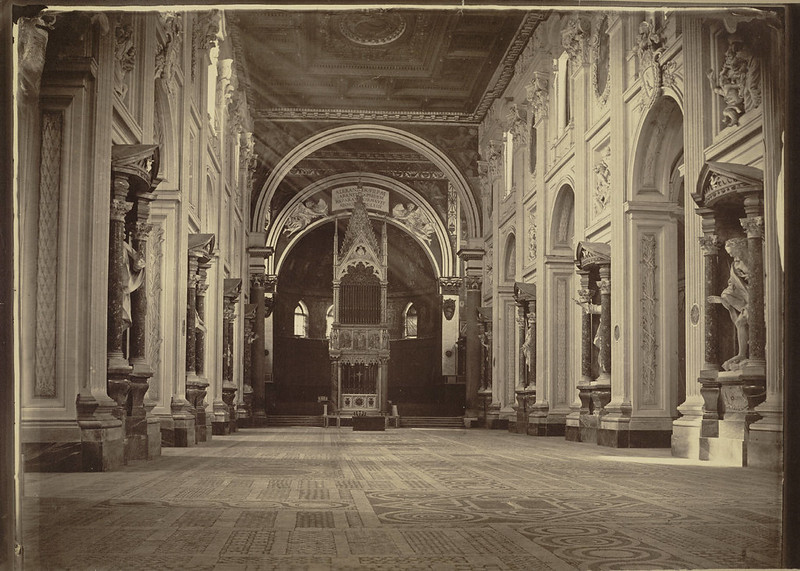Today marks a special day on the Roman Calendar. Today we celebrate the dedication of the Archbasilica of Saint John Lateran. While most around the world are more familiar with the papal presence at St. Peter’s, the Lateran Basilica is actually the seat of the Diocese of Rome, and the cathedral church for the Pope.
It’s full name in Latin is the Archibasilica Sanctissimi Salvatoris ac Sancti Ioannis Baptistae et Ioannis Evangelistae ad Lateranum. In English it is formally called The Archbasilica of the Most Holy Savior and Saints John the Baptist and John the Evangelist at the Lateran.
Being named after the patronage of our holy and noble order, knights from around the world who journey to Rome should make this a stop on their pilgrimage to pay homage to our patron saint.
If you cannot make it to Rome for whatever reason, you can go on a virtual tour here, thanks to Villanova University.
Scala Sancta
The Lateran palace is home to many relics. One of them being the Scala Sancta. These stairs once led to the praetorium of Pontius Pilate. The stairs were moved to the Lateran Palace sometime in the 4th century by Saint Helena. The Scala Sancta are believed to be stained with the blood of Jesus. The stairs are normally covered to protect against weathering, but were revealed to believers in 2019. At the top of the stairs pilgrims enter the Sancta Sanctorum, a one time papal private chapel, and home to many relics of saints.
There is an inscription near the main entrance to the church labeling the Archbasilica as the mother church of the world. The Basilica was built over the site of a Roman fort and troop barracks of the Roman imperial cavalry body guards. It was established by Septimius Severus in the year 193 AD. Substantial amounts of the remains of the fort lie directly beneath the nave of the church.
Read more on our Patron Saint – The Feast of the Beheading of St. John the Baptist
This baroque, neoclassical structure was completed in 1735. Tt is attributed to the architect Alessandro Galilei. The basilica was consecrated in 324 AD. While the primary dedication is to Christ the Savior, the secondary dedications are to Saint John the Baptist, and Saint John the Evangelist.


Recent Comments